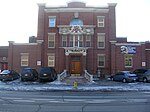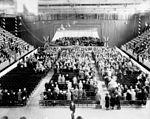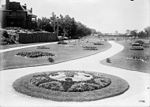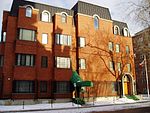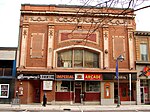Centretown United Church
1906 establishments in OntarioGothic Revival architecture in OttawaGothic Revival church buildings in CanadaUnited Church of Canada churches in Ottawa
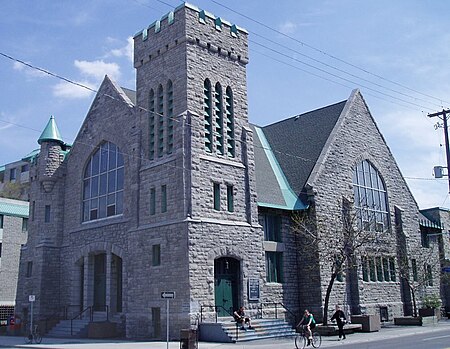
Centretown United Church is an historic church located in Ottawa, Ontario, Canada at 507 Bank Street at Argyle in the Centretown area. It was built in 1906 as the Stewarton Presbyterian Church using Gothic Revival architecture under the architecture of Moses Chamberlain Edey, (designer of Heritage site the Aberdeen Pavilion and the Daly Building. The corner stone was laid by Sir Mortimer Clarke, Lieutenant Governor of Ontario. Centretown United Church is a member church of the United Church of Canada.
Excerpt from the Wikipedia article Centretown United Church (License: CC BY-SA 3.0, Authors, Images).Centretown United Church
Bank Street, (Old) Ottawa Centretown
Geographical coordinates (GPS) Address Phone number Website External links Nearby Places Show on map
Geographical coordinates (GPS)
| Latitude | Longitude |
|---|---|
| N 45.410254 ° | E -75.692351 ° |
Address
Centretown United Church
Bank Street 507
K2P 1Z5 (Old) Ottawa, Centretown
Ontario, Canada
Open on Google Maps

